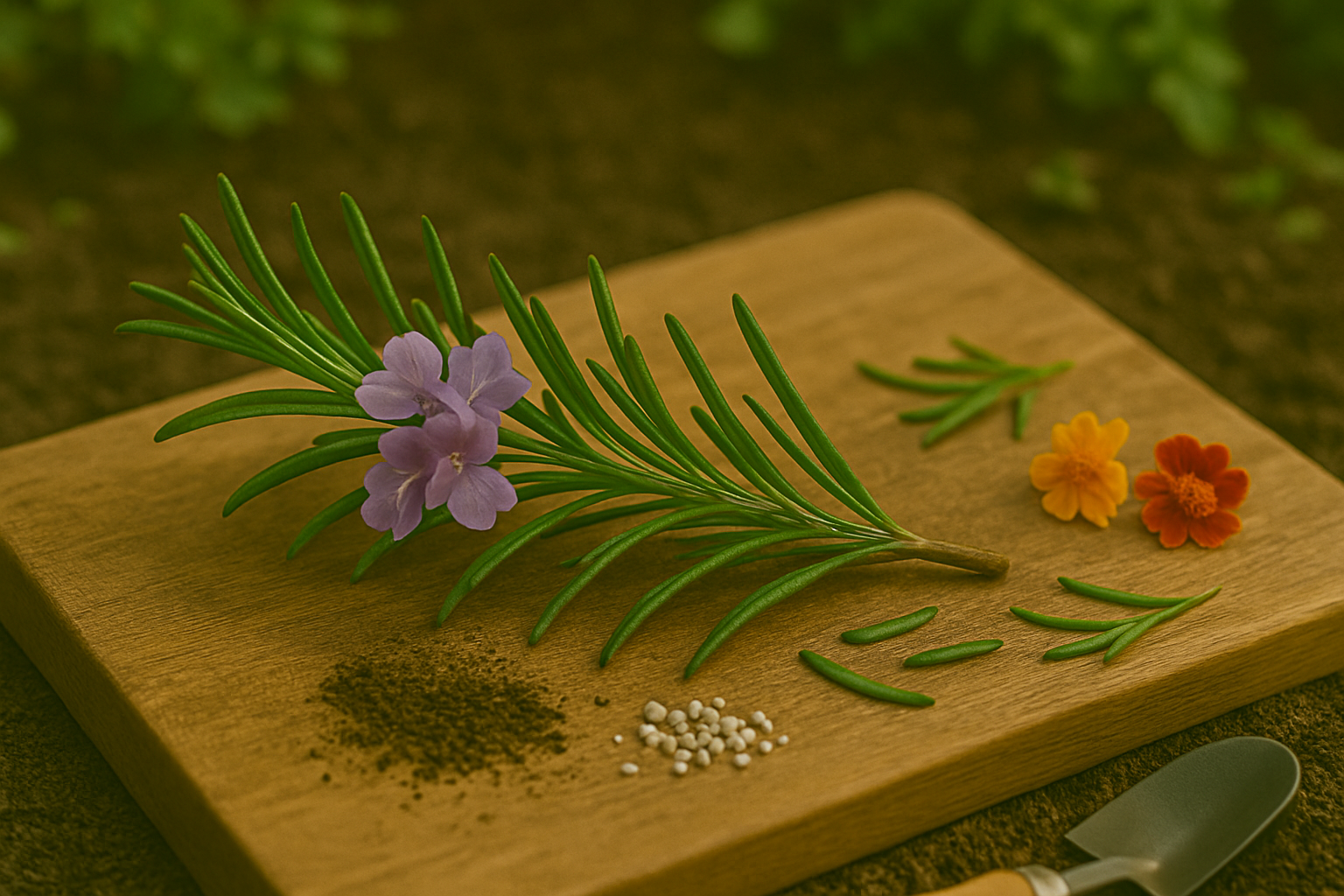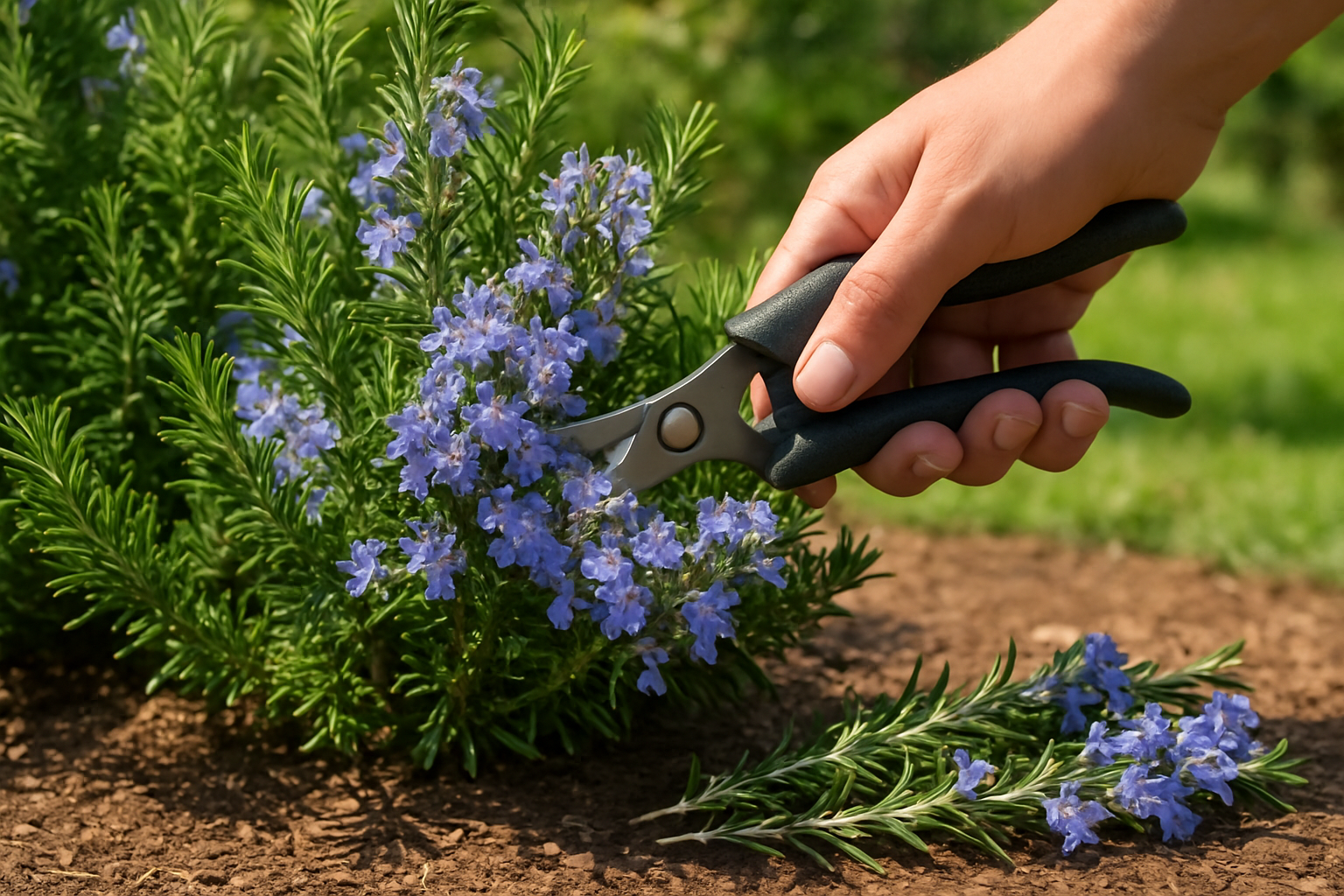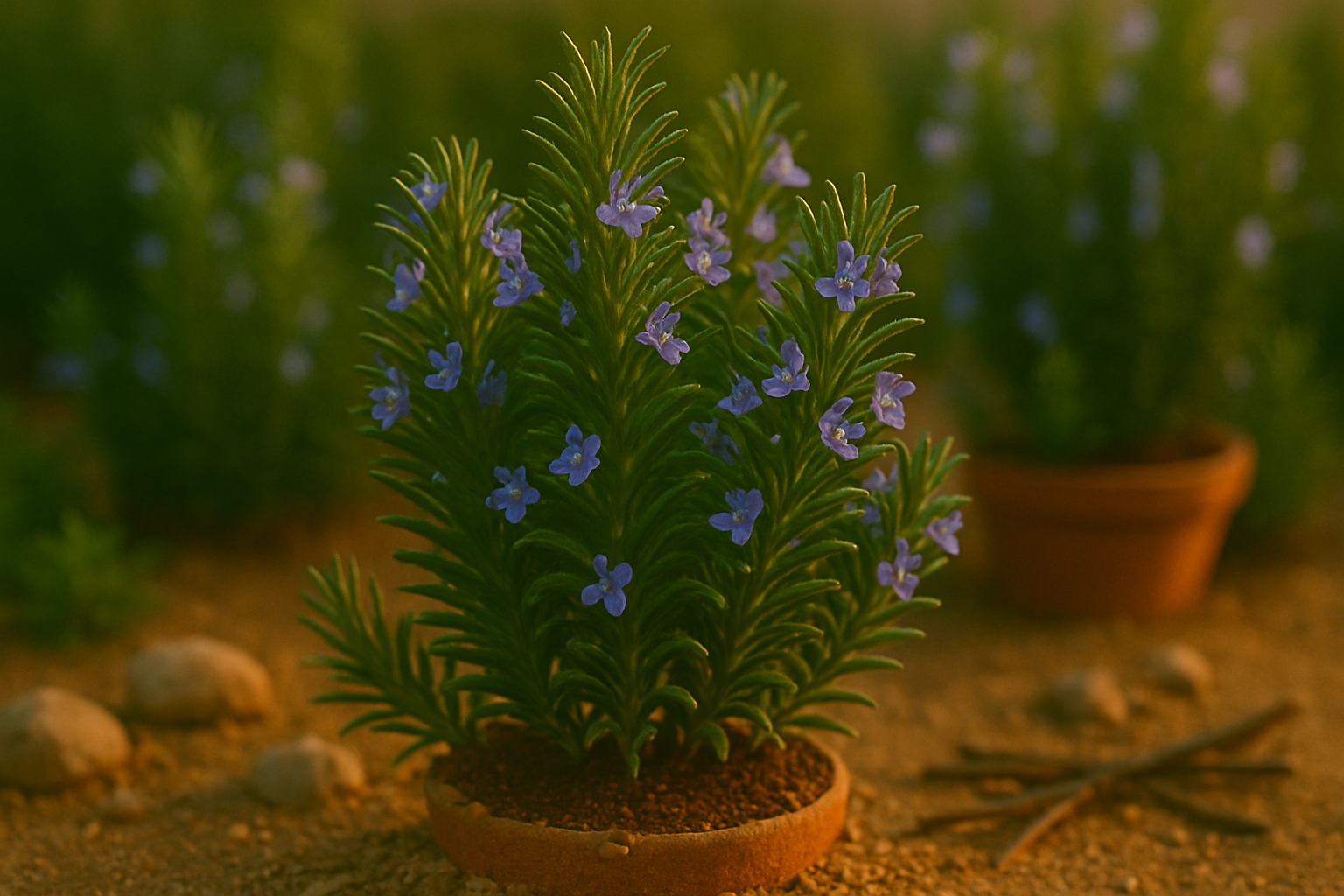What Does Rosemary Flowering Mean?

Rosemary flowering marks an important stage in the plant’s natural life cycle—it’s a healthy, normal sign that your rosemary has reached maturity and is thriving. When rosemary blooms, you’ll see delicate flowers ranging from pale blue to deep purple or even white, typically appearing in clusters along the stems.
This usually happens in late spring to early summer, but established rosemary bushes in warmer climates can flower sporadically throughout much of the year. Many people worry that flowering might harm their rosemary or reduce the quality of its leaves, but that’s a common misconception.
The emergence of blooms actually means your plant is getting the sunlight, nutrients, and care it needs. Some gardeners believe that rosemary becomes woody or loses flavor during the flowering phase; however, the leaves remain aromatic and just as effective for culinary uses even when the plant is in bloom.
You can snip and use flowering rosemary in the kitchen without any drop in quality. In fact, the flowers themselves have a mild, sweet flavor and make a pretty and edible addition to salads or desserts.
If you want to encourage fuller growth and more leaves, you can pinch off the blooms, but this isn’t strictly necessary unless you’re aiming for maximum leaf harvest.
In short, rosemary flowering is a natural, positive occurrence that signals good plant health, doesn’t degrade flavor, and even opens up some creative meal possibilities with the addition of its edible blooms.
Why and When Do Rosemary Plants Flower?
Rosemary plants flower as part of their natural life cycle, signaling both maturity and a healthy growing environment. Flowering is most likely to occur when the plant receives ample sunlight—ideally six to eight hours daily—and experiences moderate temperatures, usually between 65°F and 80°F.
In most climates, rosemary blooms from late winter through spring, but in milder regions, sporadic flowering may also happen in the fall. Plant age is a key factor: rosemary often takes two to three years to mature enough to produce abundant blossoms.
The flowers serve a vital role by attracting pollinators and facilitating seed production, helping the plant propagate.
When it comes to location, rosemary grown in the ground tends to flower more reliably than those in containers. This is because in-ground plants have access to more consistent moisture and a broader nutrient base, while container-grown rosemary can suffer from root restriction, inconsistent watering, or temperature extremes—each of which can disrupt the plant’s flowering routine.
Occasionally, gardeners worry if their rosemary flowers infrequently or unexpectedly, but this usually points back to environmental stress or youth; for example, a sudden cold snap or irregular watering schedule can deter blooms, while very young plants might not be ready to flower yet.
To encourage consistent flowering, ensure rosemary receives plenty of sunlight, well-draining soil, and regular—but not excessive—watering. Pruning after flowering can also invigorate growth and set the stage for next season’s spikes of blue, pink, or white blossoms.
Understanding these biological and environmental triggers can help gardeners set realistic expectations and enjoy the full ornamental and culinary benefits this resilient herb has to offer.
What To Do When Your Rosemary Flowers

When your rosemary plant bursts into delicate purple-blue flowers, you might wonder what comes next. The good news is you have several options, each serving a different purpose.
If you prefer bushy, leafy rosemary for cooking, pruning or deadheading spent flowers is a smart move. Simply pinch or snip the faded blooms with clean scissors to encourage fresh leaf growth and keep the plant tidy. This also helps redirect the plant’s energy back into producing those fragrant leaves rather than seeds.
On the other hand, you can allow some flowers to mature fully if you’re curious about propagating rosemary from seed. Keep in mind, though, that seeds can be slow and less reliable than cuttings. The flowers themselves are edible and have a milder flavor than the leaves—try sprinkling them on salads, infusing oils, or using them as a charming garnish.
After flowering, give your rosemary a little TLC to ensure robust health. Trim the plant lightly, focusing on removing any woody or leggy stems, but avoid cutting into old, bare wood, as rosemary may not regenerate well there. Water deeply but infrequently, letting the soil dry out between waterings, and provide a balanced, organic fertilizer if growth seems slow.
Regular pruning throughout the season helps maintain a strong, bushy shape and prevents the plant from becoming scraggly. Whether you deadhead, harvest, or let nature take its course, these simple steps will keep your rosemary thriving year after year.
How to Care for Flowering Rosemary
Caring for flowering rosemary involves a few focused steps to keep this aromatic herb thriving and vibrant. During flowering, rosemary needs plenty of sunlight—aim for at least six hours daily in a bright spot, as insufficient light can stunt growth and reduce blooming.
Watering should be moderate: rosemary’s Mediterranean roots mean it prefers to dry out between waterings, so let the top inch of soil feel dry before giving it a good soak. Always ensure your pot or garden bed drains well to prevent root rot.
For soil, choose a well-draining mix or sandy loam, and avoid heavy, clay soils that trap moisture.
When it comes to fertilizing, rosemary doesn’t need much—applying a balanced, slow-release fertilizer in early spring is sufficient. Overfeeding during the flowering phase can lead to lush foliage at the expense of blooms and can stress the plant.
A common mistake is over-watering, especially if you see wilting leaves—this is often a sign of soggy roots rather than thirst.
After flowering, gently prune back spent blooms and up to one-third of the overall plant to maintain its shape and promote bushier growth. Use clean, sharp shears, and focus on trimming above leaf nodes to encourage new shoots. Avoid heavy pruning into woody stems, as rosemary may be slow to recover.
By following these care guidelines and watching for common pitfalls, you’ll keep your flowering rosemary healthy, fragrant, and primed for a long life in your garden or windowsill.
Uses for Rosemary Flowers
Rosemary flowers are a delightful, often overlooked treasure in the herb garden, offering a milder and slightly sweeter flavor compared to the robust, piney taste of rosemary leaves. Their pale blue or purple blooms make an eye-catching garnish for salads, soups, or desserts—just sprinkle a few on top of a dish for a fresh pop of color and subtle herbal note.
You can infuse rosemary flowers into oils, vinegars, or honey for a gentle botanical undertone, perfect for drizzling over roasted vegetables or stirring into dressings. Rosemary flower tea is another aromatic option; simply steep the fresh or dried petals in hot water for a lightly floral, soothing drink.
Ornamental uses abound as well—add clusters of rosemary blooms to bouquets or table arrangements for an elegant, cottage-garden look. Beyond the kitchen and vase, rosemary flowers are beloved by pollinators like bees and butterflies, so leaving some blossoms on the plant helps support your garden’s ecosystem.
For best flavor and longevity, harvest rosemary flowers in the morning after the dew has dried, gently snipping them with clean scissors. Handle the delicate blossoms carefully, and use them fresh, or dry them in a single layer away from direct sunlight for later use.
Frequently Asked Questions About Rosemary Flowering
Rosemary typically flowers once or twice a year, often in early spring and sometimes again in late summer, depending on local climate conditions. Many gardeners worry that allowing rosemary to flower might weaken the plant or affect its flavor, but moderate blooming is actually a sign of health—the leaves remain aromatic and harvestable.
If your rosemary isn’t flowering, check that it’s getting at least six hours of sunlight daily and avoid overwatering, as soggy roots can stunt blossoming. Too much fertilizer, especially high-nitrogen types, can lead to lots of green growth but few flowers.
On the flip side, if your rosemary is flowering too early, it may be responding to stress from heat or neglect. Mulching and consistent watering can help reduce such stress.
Leaf discoloration during flowering is usually caused by natural energy shifts, but yellow or brown leaves may signal nutrient imbalance or poor drainage; refer to our Troubleshooting Rosemary Plant Problems section for fixes.
You don’t need to prevent flowering, though regularly trimming spent blooms can encourage bushier growth. For more on pruning techniques, see our Pruning Rosemary Guide.
In general, a flowering rosemary plant is thriving—just keep up with basic care for ongoing vitality.
